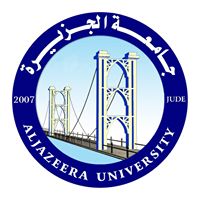اشترك بالحزمة الذهبية واحصل على وصول غير محدود شمرا أكاديميا
تسجيل مستخدم جديدLeft-symmetric Superalgebra Structures on the Super-Virasoro Algebras
373
0
0.0
(
0
)
اسأل ChatGPT حول البحث

ﻻ يوجد ملخص باللغة العربية
In this paper, we classify the compatible left-symmetric superalgebra structures on the super-Virasoro algebras satisfying certain natural conditions.
قيم البحث
اقرأ أيضاً
We find that a compatible graded left-symmetric algebra structure on the Witt algebra induces an indecomposable module of the Witt algebra with 1-dimensional weight spaces by its left multiplication operators. From the classification of such modules
of the Witt algebra, the compatible graded left-symmetric algebra structures on the Witt algebra are classified. All of them are simple and they include the examples given by Chapoton and Kupershmidt. Furthermore, we classify the central extensions of these graded left-symmetric algebras which give the compatible graded left-symmetric algebra structures on the Virasoro algebra. They coincide with the examples given by Kupershmidt.
The loop super-Virasoro conformal superalgebra $mathfrak{cls}$ associated with the loop super-Virasoro algebra is constructed in the present paper. The conformal superderivation algebra of $mathfrak{cls}$ is completely determined, which is shown to c
onsist of inner superderivations. And nontrivial free and free $mathbb{Z}$-graded $mathfrak{cls}$-modules of rank two are classified. We also give a classification of irreducible free $mathfrak{cls}$-modules of rank two and all irreducible submodules of each free $mathbb{Z}$-graded $mathfrak{cls}$-module of rank two.
We introduce a notion of left-symmetric bialgebra which is an analogue of the notion of Lie bialgebra. We prove that a left-symmetric bialgebra is equivalent to a symplectic Lie algebra with a decomposition into a direct sum of the underlying vector
spaces of two Lagrangian subalgebras. The latter is called a parakahler Lie algebra or a phase space of a Lie algebra in mathematical physics. We introduce and study coboundary left-symmetric bialgebras and our study leads to what we call $S$-equation, which is an analogue of the classical Yang-Baxter equation. In a certain sense, the $S$-equation associated to a left-symmetric algebra reveals the left-symmetry of the products. We show that a symmetric solution of the $S$-equation gives a parakahler Lie algebra. We also show that such a solution corresponds to the symmetric part of a certain operator called ${cal O}$-operator, whereas a skew-symmetric solution of the classical Yang-Baxter equation corresponds to the skew-symmetric part of an ${cal O}$-operator. Thus a method to construct symmetric solutions of the $S$-equation (hence parakahler Lie algebras) from ${cal O}$-operators is provided. Moreover, by comparing left-symmetric bialgebras and Lie bialgebras, we observe that there is a clear analogue between them and, in particular, parakahler Lie groups correspond to Poisson-Lie groups in this sense.
We propose a new method to compute connection matrices of quantum Knizhnik-Zamolodchikov equations associated to integrable vertex models with super algebra and Hecke algebra symmetries. The scheme relies on decomposing the underlying spin representa
tion of the affine Hecke algebra in principal series modules and invoking the known solution of the connection problem for quantum affine Knizhnik-Zamolodchikov equations associated to principal series modules. We apply the method to the spin representation underlying the $mathcal{U}_qbigl(hat{mathfrak{gl}}(2|1)bigr)$ Perk-Schultz model. We show that the corresponding connection matrices are described by an elliptic solution of a supersymmetric version of the dynamical quantum Yang-Baxter equation with spectral parameter.
We review the list of non-degenerate invariant (super)symmetric bilinear forms (briefly: NIS) on the following simple (relatives of) Lie (super)algebras: (a) with symmetrizable Cartan matrix of any growth, (b) with non-symmetrizable Cartan matrix of
polynomial growth, (c) Lie (super)algebras of vector fields with polynomial coefficients, (d) stringy a.k.a. superconformal superalgebras, (e) queerifications of simple restricted Lie algebras. Over algebraically closed fields of positive characteristic, we establish when the deform (i.e., the result of deformation) of the known finite-dimensional simple Lie (super)algebra has a NIS. Amazingly, in most of the cases considered, if the Lie (super)algebra has a NIS, its deform has a NIS with the same Gram matrix after an identification of bases of the initial and deformed algebras. We do not consider odd parameters of deformations. Closely related with simple Lie (super)algebras with NIS is the notion of doubly extended Lie (super)algebras of which affine Kac--Moody (super)algebras are the most known examples.
سجل دخول لتتمكن من نشر تعليقات
التعليقات
جاري جلب التعليقات


سجل دخول لتتمكن من متابعة معايير البحث التي قمت باختيارها


